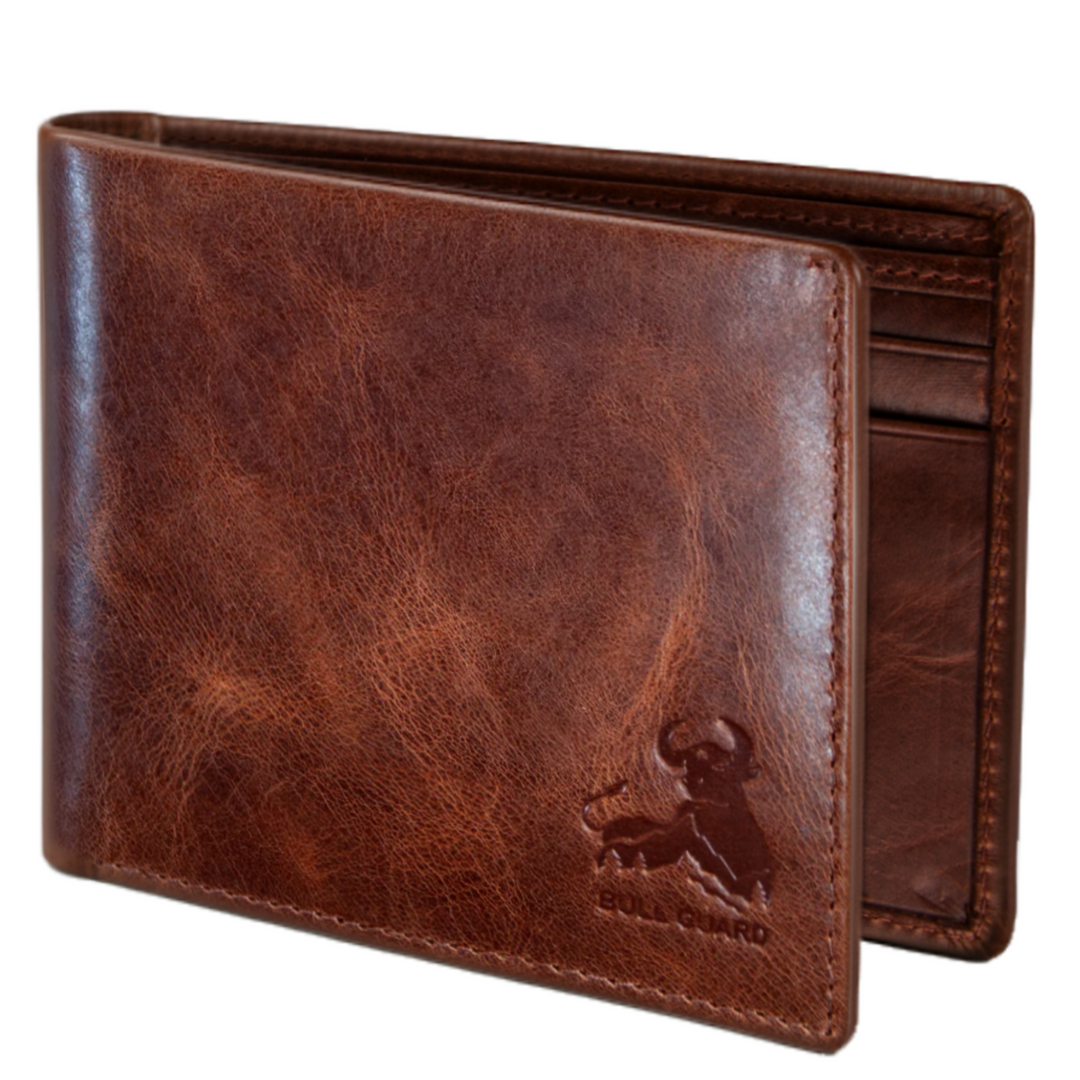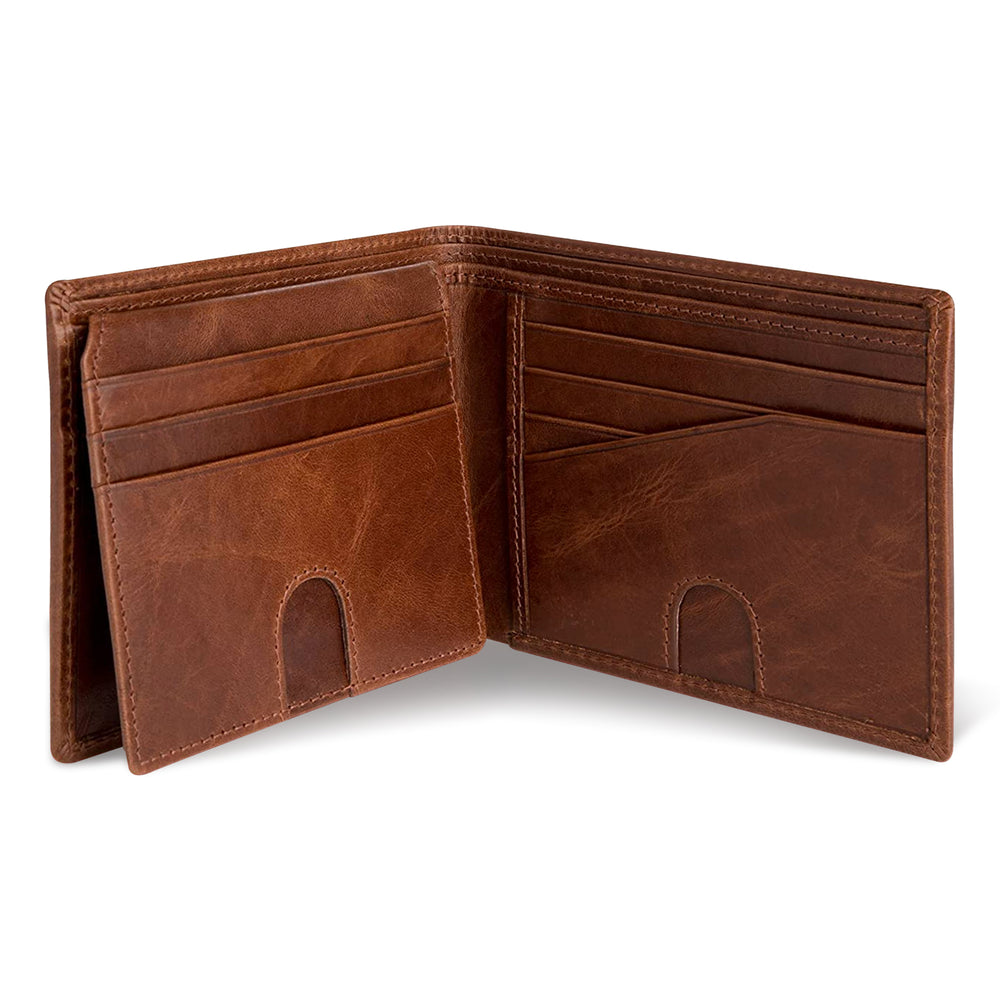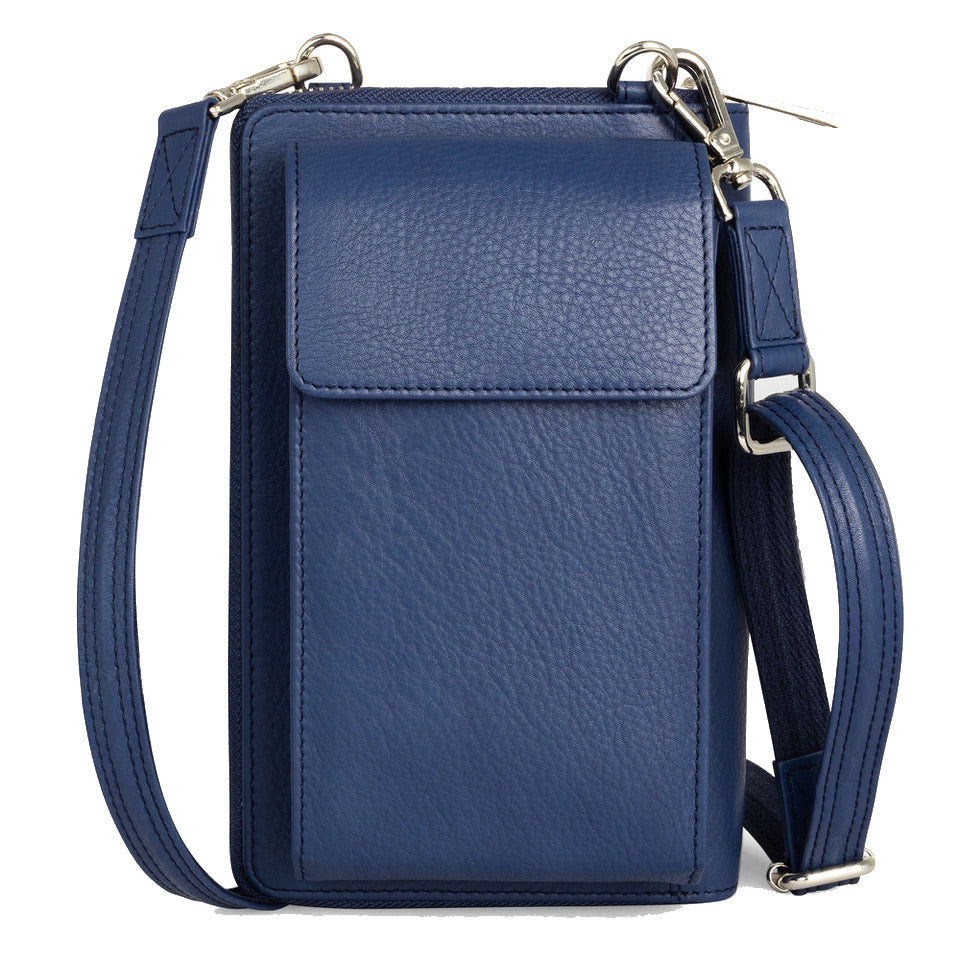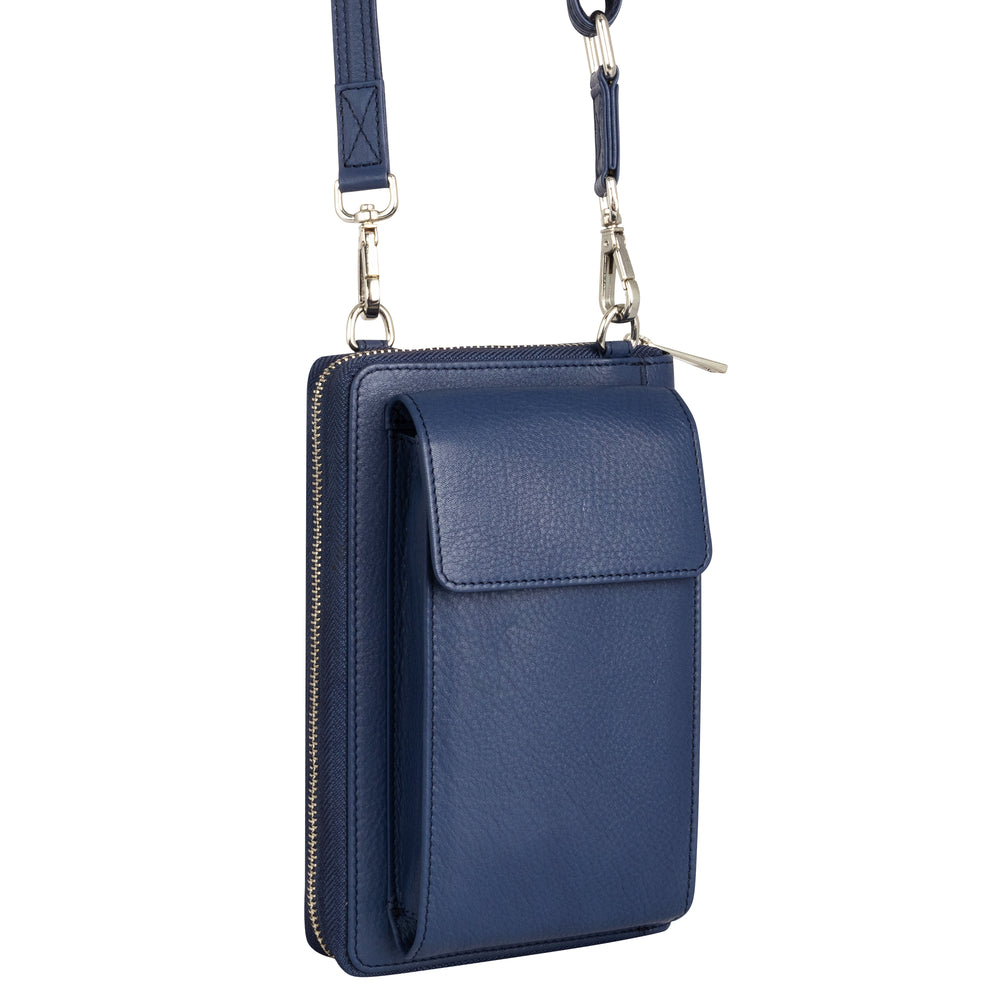Key Takeaways
- PU leather is a synthetic material made by coating fabric with polyurethane.
- The base fabric for PU leather is typically polyester or cotton.
- PU leather mimics the look and texture of animal leather without using animal products.
- "PU" stands for polyurethane, a flexible plastic polymer used in the coating.
- PU leather is designed to be soft, durable, and visually similar to genuine leather.
PU Leather, What It Is, How It Compares, and Why It Matters in Modern Accessories
What is PU Leather?
PU leather is a synthetic material made by coating a fabric base, typically polyester or cotton, with polyurethane (PU). This creates a leather-like surface that mimics the appearance and texture of animal hide without using any animal products. The "PU" stands for polyurethane, a flexible plastic polymer that can be engineered to feel soft, durable, and visually similar to genuine leather.
The manufacturing process involves applying liquid polyurethane over a woven or non-woven fabric substrate, then embossing it with grain patterns that replicate the natural texture of cowhide, buffalo, or other leather types. This allows manufacturers to create consistent colors, textures, and finishes that would be impossible with natural materials.
For those seeking a wallet that balances style and affordability, PU leather is often used in entry-level options, but for a more premium feel and longevity, consider the 2 ID Leather Wallet or the Bifold Slim with or without Airtag, both crafted from genuine leather for superior durability and appearance.
Quick Answers:
- Is PU leather real leather? No, it's a synthetic alternative made from polyurethane and fabric.
- Is PU leather vegan? Yes, it contains no animal products or byproducts.
- PU leather full form: Polyurethane leather
| Type of PU Leather | Base Material | Defining Feature | Typical Use |
|---|---|---|---|
| Pure PU | Polyester fabric | 100% synthetic coating | Fashion accessories, bags |
| Bicast | Split leather + PU | Leather base with PU top | Furniture, automotive |
| Bonded | Leather scraps + PU | Reconstituted leather fibers | Budget leather goods |
PU Leather vs. Genuine Leather: Side-by-Side Comparison

The fundamental difference between pu leather vs genuine leather lies in their origin and aging characteristics. While PU leather maintains a consistent appearance throughout its lifespan, genuine leather develops a unique patina that tells the story of its use, something I've witnessed firsthand through years of crafting Bull Guard wallets.
Is PU leather durable? PU leather typically lasts 1-3 years with heavy daily use, compared to 5-15+ years for premium full-grain leather. The synthetic coating can crack, peel, or become sticky over time, especially when exposed to heat or frequent flexing. Genuine leather, particularly full-grain varieties, actually improves with age as natural oils distribute and fibers compact.
| Feature | PU Leather | Genuine Leather |
|---|---|---|
| Initial Cost | $15-40 for wallets | $50-200+ for quality pieces |
| Water Resistance | Naturally water-resistant | Absorbs water, requires treatment |
| Aging Process | Degrades, cracks, peels | Develops rich patina |
| Maintenance | Simple wipe-down | Conditioning, proper storage |
| Breathability | Non-porous, traps moisture | Natural pores allow air flow |
For daily wallet use, whether navigating city streets or mountain trails, genuine leather adapts to your routine, softening in high-contact areas while maintaining structural integrity. PU leather maintains its factory appearance initially but lacks the adaptive qualities that make leather goods true companions over time.
PU Leather vs. PVC, Bonded, and Other Artificial Leathers
Understanding pu leather vs faux leather requires recognizing that "faux leather" is an umbrella term encompassing PU, PVC (polyvinyl chloride), and other synthetic alternatives. PVC leather uses a different base polymer that tends to be stiffer, less breathable, and often carries a stronger chemical odor than PU.
PU leather offers superior flexibility and a more natural feel compared to PVC, making it the preferred choice for items requiring frequent flexing like wallets and handbags. Bonded leather combines leather scraps with polyurethane binding, creating a product that initially feels more like genuine leather but often delaminates faster than pure PU.
| Material Type | Flexibility | Odor Level | Environmental Impact | Best Applications |
|---|---|---|---|---|
| PU Leather | High flexibility | Minimal chemical smell | Moderate (petroleum-based) | Wallets, bags, jackets |
| PVC Leather | Stiff, less pliable | Strong chemical odor | High (toxic production) | Furniture, automotive |
| Bonded Leather | Variable, often cracks | Leather-like initially | Mixed impact | Budget furniture, book covers |
Microfiber leather represents another category entirely, using ultra-fine synthetic fibers to create a suede-like texture. While softer than PU, it lacks the smooth finish most consumers expect from leather alternatives and requires different care methods.
Key Features of PU Leather Accessories
PU leather accessories offer uniform grain patterns and consistent coloring that genuine leather cannot match. The synthetic manufacturing process allows for perfect color matching across production runs and eliminates natural variations like scars or grain irregularities found in animal hides.
Is PU leather waterproof? PU leather provides natural water resistance due to its plastic coating, making it practical for unexpected weather. However, this same non-porous surface prevents breathability, causing moisture buildup in items like wallets carried close to the body. The typical lifespan ranges from 1-3 years with heavy use, as the polyurethane coating eventually cracks from repeated flexing.
Maintenance simplicity stands as PU leather's strongest practical advantage. Most stains wipe away with a damp cloth, and the material resists absorption of oils and dirt that would permanently mark genuine leather. This makes PU leather ideal for high-contact items or environments where frequent cleaning is necessary.
PU Leather Maintenance Tips:
- Clean weekly with mild soap and water
- Avoid heat sources that can cause cracking
- Store flat to prevent creasing
- Use leather protectant sprays designed for synthetic materials
Through our testing at Bull Guard, we've found that while PU leather serves specific needs well, it cannot replicate the adaptive qualities that make premium leather goods lifelong companions. The synthetic surface maintains its factory appearance without developing the rich patina that tells your story through years of adventures. For more on what makes a durable leather wallet for everyday use, see our in-depth guide.
Environmental Impact and Sustainability of PU Leather

PU leather production relies heavily on petroleum-based chemicals and energy-intensive manufacturing processes. The polyurethane coating requires fossil fuel derivatives, contributing to carbon emissions during production. However, it avoids the environmental concerns associated with leather tanning, including chromium processing and water pollution from tanneries.
End-of-life disposal presents challenges for PU leather products. The synthetic materials do not biodegrade naturally, potentially remaining in landfills for decades. Unlike genuine leather, which can decompose and return nutrients to soil, PU leather requires specialized recycling facilities that are not widely available. For a deeper dive into the chemistry behind polyurethane, visit this Polyurethane resource on PubChem.
| Material | Production Impact | Biodegradability | Recycling Options | Carbon Footprint |
|---|---|---|---|---|
| PU Leather | High energy, chemicals | Non-biodegradable | Limited facilities | Moderate |
| Genuine Leather | Tanning chemicals | Naturally biodegrades | Repurposing possible | Variable by source |
| Plant-based alternatives | Lower chemical use | Often biodegradable | Emerging options | Generally lower |
Emerging plant-based alternatives like mushroom leather (Mylo) and cactus leather offer more sustainable options, though they currently cost significantly more than traditional PU. When choosing PU leather, look for manufacturers using water-based rather than solvent-based processes, and those implementing take-back programs for end-of-life products.
Identifying PU Leather vs. Real Leather: Field-Test Techniques
Visual inspection reveals key differences between PU and genuine leather. Real leather shows natural grain variations, small imperfections, and irregular pore patterns, while PU leather displays perfectly uniform textures and consistent coloring. Examine the edges, genuine leather shows fibrous layers, while PU leather reveals the fabric backing beneath the coating.
The water absorption test provides definitive identification. Place a small water drop on an inconspicuous area and observe for 10-15 seconds. Genuine leather absorbs water gradually, while PU leather repels it completely. This simple test works because real leather's porous structure naturally draws in moisture, whereas PU's plastic coating creates a waterproof barrier.
How to Clean, Care For, and Repair PU Leather Products
Daily maintenance of PU leather requires only a soft, damp microfiber cloth to remove surface dirt and oils. Clean weekly using a solution of mild soap (one teaspoon) mixed with warm water (one cup). Avoid harsh chemicals, alcohol-based cleaners, or abrasive materials that can damage the polyurethane coating.
For stain removal, act within 5 minutes for best results. Ink stains respond to isopropyl alcohol applied with a cotton swab, dab gently without rubbing. Food and grease stains lift with a paste of baking soda and water, left for 10 minutes before wiping clean. Oil-based stains require commercial degreasing products designed for synthetic materials.
Preventing PU Leather Damage:
- Keep away from direct sunlight and heat sources
- Store in breathable fabric bags, not plastic
- Avoid sharp objects that can puncture the coating
- Clean spills immediately to prevent staining
Surface cracks and scratches can be repaired using leather repair fillers specifically formulated for synthetic materials. Apply the filler with a palette knife, allow 24 hours drying time, then sand lightly with fine-grit paper. For peeling areas, carefully remove loose material and apply flexible adhesive designed for fabric-backed synthetics.
Establish a maintenance schedule: deep clean every 6 months, inspect for damage quarterly, and condition with synthetic leather protectant annually. This routine extends the typical 1-3 year lifespan of PU leather accessories. If you want to keep your wallet looking sharp, check out our tips for a stylish leather wallet for men.
Practical Applications, When (and When Not) to Choose PU Leather

PU leather excels in specific scenarios where its synthetic properties provide advantages. Choose PU leather for seasonal accessories, high-color fashion items, or products requiring frequent sanitization. The material's water resistance and easy cleaning make it ideal for gym bags, outdoor furniture, or items exposed to spills and moisture.
Budget-conscious consumers find PU leather valuable for trendy pieces that won't see long-term use. The uniform appearance and consistent quality across production runs suit applications where aesthetic predictability matters more than longevity.
Avoid PU leather for daily-use items requiring durability and flexibility. Wallets, frequently-handled bags, and items subject to constant bending develop stress cracks within months. The synthetic coating cannot adapt to wear patterns like genuine leather, leading to premature failure at stress points.
At Bull Guard, our road testing reveals why we choose full-grain leather for wallets and crossbody purses. Customer feedback consistently shows that while PU leather wallets look appealing initially, they fail to develop the comfortable flexibility and personalized patina that makes an accessory truly yours. One customer noted: "My PU wallet looked perfect for six months, then started peeling at the fold lines where I needed it most." If you prefer a hands-free option, our Crossbody Wallet Purse, XtraRoom offers genuine leather quality and practical design.
| Application | PU Leather Suitable? | Reasoning |
|---|---|---|
| Fashion jackets | Yes | Occasional wear, style flexibility |
| Daily-use wallets | No | High flex stress, longevity needed |
| Decorative items | Yes | Low handling, consistent appearance |
| Travel accessories | Maybe | Depends on frequency and care needs |
The Most Frequent Problems With PU Leather, And How To Fix Them
Peeling represents the most common PU leather failure, occurring when the polyurethane coating separates from the fabric base. This typically happens at stress points like wallet folds or bag corners. Address peeling immediately by trimming loose material with sharp scissors, then applying flexible fabric adhesive. Allow 24 hours to cure before use.
Cracking develops from repeated flexing and exposure to temperature changes. Small surface cracks can be filled with leather repair compound, apply with a palette knife, smooth the surface, and let cure for 48 hours. For extensive cracking, replacement becomes more cost-effective than repair. For a classic alternative that stands up to daily use, try our Classic Leather Trifold wallet.
Sticky surfaces develop when the PU coating begins to break down, often accelerated by heat exposure or chemical contact. Clean with isopropyl alcohol to remove the degraded coating, though this may alter the texture permanently. Prevention through proper storage proves more effective than treatment.
Odor issues arise from manufacturing chemicals or moisture trapped beneath the non-breathable surface. Place activated charcoal or baking soda inside the item overnight to absorb odors. For persistent smells, light cleaning with white vinegar solution helps neutralize chemical residues. For more information on the science and applications of polyurethane, see this ScienceDirect overview.
Color fading occurs primarily from UV exposure. While less common than with natural materials, prolonged sunlight can cause uneven discoloration. Use UV-protective sprays designed for synthetic materials and store items away from direct light.
Eco-Friendly and Next-Gen Alternatives to PU Leather
Plant-based leather alternatives are revolutionizing the synthetic leather market with materials derived from agricultural waste and innovative biotechnology. Piñatex, made from pineapple leaf waste, offers comparable durability to PU leather while providing biodegradability and supporting farming communities through waste valorization.
Mushroom leather, particularly Mylo, and cactus-based leathers are gaining traction for their eco-friendly profiles. If you’re looking for a wallet that combines style, function, and sustainability, the Airtag Leather Card Holder Wallet for Men is a modern option designed for everyday convenience. You might also be interested in our guide to a leather card holder with airtag for more insights on smart wallet choices.
Frequently Asked Questions
What are the main differences between PU leather and genuine leather in terms of durability and appearance over time?
PU leather is a synthetic material that mimics the look of genuine leather but is generally less durable and less breathable over time. While genuine leather develops a rich patina and softens with use, PU leather tends to maintain a consistent appearance but may crack or peel with extended wear.
Is PU leather a vegan-friendly alternative to animal leather?
Yes, PU leather is vegan-friendly as it contains no animal products or byproducts. It offers a cruelty-free option for those seeking leather-like materials without using animal hides.
How should I properly clean and care for PU leather products to ensure their longevity?
To care for PU leather, gently wipe the surface with a damp cloth and mild soap when needed, avoiding harsh chemicals or excessive moisture. Regular cleaning and avoiding direct sunlight or heat will help maintain its appearance and extend its lifespan.
What types of PU leather exist, and what are their typical uses in fashion and furniture?
There are several types of PU leather: Pure PU, which is 100% synthetic and commonly used in fashion accessories and bags; Bicast, which combines split leather with a PU coating, often found in furniture and automotive upholstery; and Bonded leather, made from leather scraps bonded with PU, typically used in budget leather goods.










